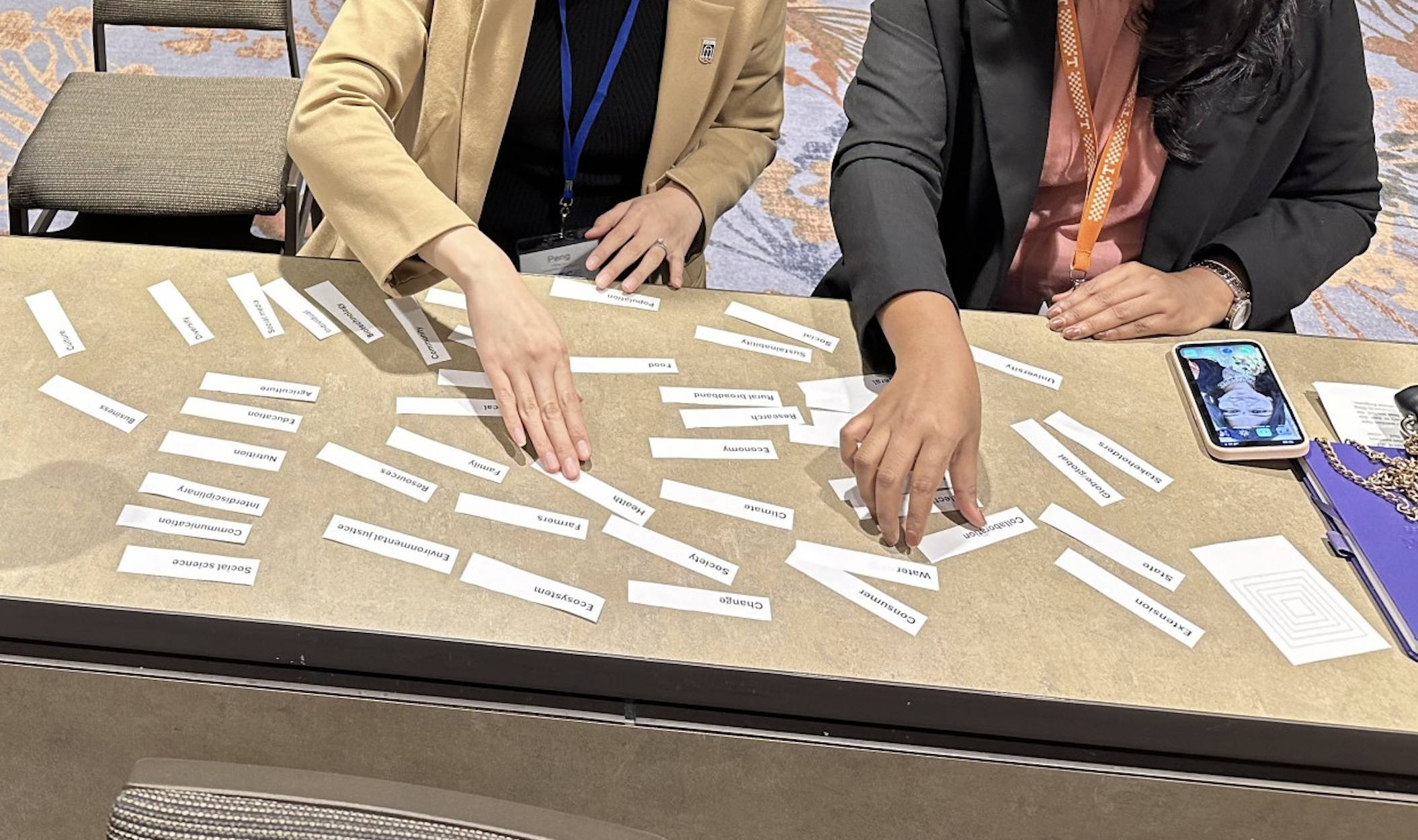“By incorporating artistic elements into our communication strategies, we can effectively convey complex scientific concepts in a more accessible and compelling manner.”––E. Dustman
Recently, Emily Dustman had the privilege of leading a thought-provoking professional development session in collaboration with Allison R. Byrd and Dr. Alexa Lamm at the National Agriculture Communication Symposium (NACS) in Atlanta, Georgia. The professional development session, “Using Art to Communicate Agricultural and Environmental Science”, leveraged the complementary strengths of art and science to our enhance communication efforts.
In the ever-evolving landscape of science communication, the integration of art has emerged as a powerful tool to engage and connect with audiences on a deeper level. Through the professional development session, the team emphasized the importance of recognizing subjective interpretations of words and how they can evoke different emotions. The knowledge gained from this session helped improve participants’ skills in messaging and further helped them see how art can serve as a conduit for eliciting both understanding and emotion.
The session opened with an interactive activity involving semantic grouping of words. Everyone was divided into groups and tasked with collaboratively creating word associations to tell a story, recognizing that words carry different meanings and connotations for individuals. This exercise encouraged everyone to explore the nuances of language and consider how our choice of words shapes the perception of scientific information.
Building upon the semantic grouping activity, we proceeded to have everyone select two words from their collective pool and assign an emotion to each. They were then tasked to select colors they thought represented their emotions and color the squares in accordingly. This visual aspect added another layer of depth to the group’s communication, as colors have the power to evoke strong emotional responses and convey subtle nuances that words alone may fail to capture. As a closing activity, we invited participants to guess the emotions associated with each word based on the colored squares—a testament to the interconnectedness of art, emotion, and perception in communication.
Art possesses the remarkable ability to transcend language barriers and evoke emotions that resonate universally. This professional development session with Emily Dustman, Allison Byrd, and Dr. Alexa Lamm serves as a catalyst for exploring new avenues of expression and enhancing our effectiveness as science communicators. As we navigate the complexities of the modern world, let us continue to harness the transformative power of art to illuminate science and apply it in our communication endeavors to ignite curiosity and inspire positive change in the world.
_______________
Dustman’s research focuses on the integration of art into our communication systems as a powerful tool to enhance public understanding, foster empathy, and inspire collective action. Byrd and Lamm brought a rich background of expertise to the professional development session. Byrd is a doctoral candidate at the University of Georgia and her research focuses on the intricate relationship between science and the public, with a particular emphasis on the dimensions of culture and communication. Lamm is an expert in social science research, exploring the influence of communication strategies on decision-making processes and the adoption of innovative scientific technologies aimed at enhancing agricultural production while upholding environmental sustainability.
NACS was held in conjunction with the Southern Association of Agricultural Scientists annual meeting. To learn about additional Lamm Lab presentations held at this convergence of conferences, see our post on the Southern Region meeting of the American Society for Horticultural Sciences, Southern Region American Association for Agricultural Education Conference , and the Southern Rural Sociological Association.
